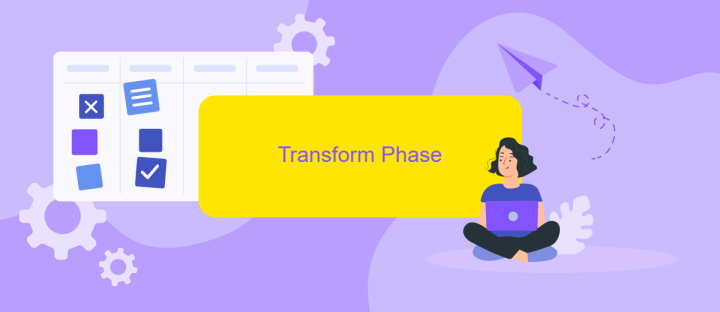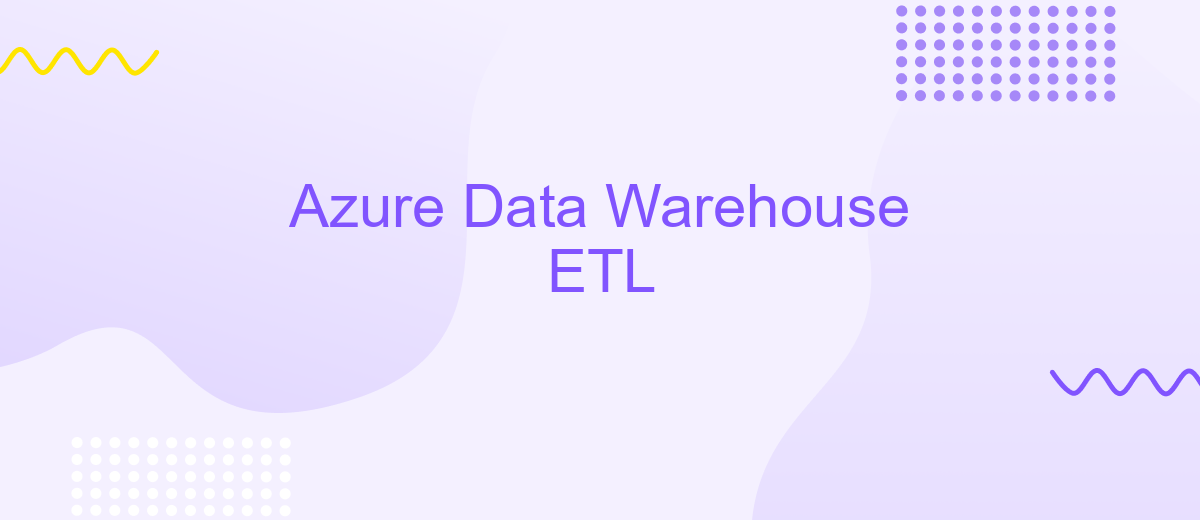Azure Data Warehouse ETL
Azure Data Warehouse ETL (Extract, Transform, Load) is a critical process for managing and optimizing large-scale data operations in the cloud. This article explores how Azure's robust ETL capabilities streamline data integration, enhance performance, and enable sophisticated analytics. By leveraging Azure's tools, businesses can efficiently handle complex data workflows, ensuring data accuracy and accessibility for informed decision-making.
Introduction
Azure Data Warehouse ETL (Extract, Transform, Load) is a critical process for managing and optimizing data workflows in the cloud. By leveraging Azure's robust infrastructure, organizations can efficiently gather data from various sources, transform it into meaningful insights, and load it into a centralized repository for analysis and reporting.
- Scalable storage solutions to handle large datasets
- Advanced data transformation capabilities
- Seamless integration with other Azure services
- Enhanced security and compliance features
Integrating various data sources can be challenging, but tools like ApiX-Drive simplify the process by providing an easy-to-use platform for setting up and managing integrations. This ensures that data flows smoothly between systems, allowing businesses to focus on deriving value from their data rather than dealing with integration complexities.
Extract Phase

The Extract phase in an Azure Data Warehouse ETL process involves retrieving data from various source systems. This can include databases, flat files, APIs, and other data repositories. The goal is to gather all relevant data needed for analysis and reporting. Azure Data Factory is commonly used for this phase due to its robust capabilities in connecting to multiple data sources. It supports a wide range of connectors, making it easier to extract data from disparate systems efficiently.
For seamless integration, tools like ApiX-Drive can be invaluable. ApiX-Drive simplifies the process of connecting different applications and automating data extraction. By using ApiX-Drive, you can set up automated workflows to pull data from various sources without extensive coding. This not only speeds up the ETL process but also ensures that data is consistently updated and accurate. Leveraging such tools can significantly enhance the efficiency and reliability of the Extract phase in your Azure Data Warehouse ETL pipeline.
Transform Phase

The Transform phase in an Azure Data Warehouse ETL process involves converting raw data into a more usable format. This step is crucial as it ensures that the data is clean, consistent, and ready for analysis. During this phase, various transformations such as filtering, aggregating, and joining data from different sources are performed.
- Data Cleaning: Remove duplicates, handle missing values, and correct inconsistencies.
- Data Transformation: Apply business rules, calculations, and data type conversions.
- Data Integration: Combine data from multiple sources to create a unified dataset.
- Data Aggregation: Summarize data to provide insights at different levels of granularity.
- Data Enrichment: Enhance data by adding additional information from external sources.
Tools like Azure Data Factory and Azure Databricks are commonly used for these transformations. Additionally, services like ApiX-Drive can facilitate the integration of various data sources, ensuring seamless data flow and transformation. By leveraging these tools, organizations can ensure that their data is accurate, consistent, and ready for meaningful analysis.
Load Phase

The Load Phase in the ETL process for Azure Data Warehouse is critical for transferring the transformed data into the warehouse. This phase ensures that the data is accurately and efficiently loaded, maintaining data integrity and consistency. The performance of the Load Phase can significantly impact the overall efficiency of the ETL process.
During this phase, various strategies and tools can be employed to optimize the loading process. For instance, using batch processing can help in handling large volumes of data, while incremental loading can ensure that only new or updated data is transferred, reducing the load on the system.
- Batch Processing: Efficiently handles large datasets by loading data in chunks.
- Incremental Loading: Transfers only new or modified data to minimize system load.
- Parallel Loading: Uses multiple threads to load data simultaneously, speeding up the process.
- Data Validation: Ensures data accuracy and consistency before loading into the warehouse.
Integrating third-party services like ApiX-Drive can further streamline the Load Phase. ApiX-Drive provides automated data integration solutions that can simplify the process of transferring data from various sources to Azure Data Warehouse, ensuring a seamless and efficient ETL workflow.
- Automate the work of an online store or landing
- Empower through integration
- Don't spend money on programmers and integrators
- Save time by automating routine tasks
Conclusion
In summary, leveraging Azure Data Warehouse for ETL processes offers a robust and scalable solution for managing large datasets. Its integration with various Azure services ensures that data can be seamlessly ingested, transformed, and loaded, providing businesses with real-time insights and analytics capabilities. The platform's flexibility allows for customization to meet specific business needs, ensuring that data workflows are efficient and effective.
Moreover, integrating third-party tools like ApiX-Drive can further streamline the ETL process by automating data transfers between different systems. This not only saves time but also reduces the risk of errors associated with manual data handling. By utilizing these advanced tools and services, organizations can enhance their data management strategies, ultimately driving better decision-making and operational efficiency.
FAQ
What is Azure Data Warehouse ETL?
How do I automate ETL processes in Azure Data Warehouse?
What are the best practices for ETL in Azure Data Warehouse?
Can I integrate third-party data sources with Azure Data Warehouse?
How do I handle data transformations in Azure Data Warehouse ETL?
Apix-Drive is a simple and efficient system connector that will help you automate routine tasks and optimize business processes. You can save time and money, direct these resources to more important purposes. Test ApiX-Drive and make sure that this tool will relieve your employees and after 5 minutes of settings your business will start working faster.


